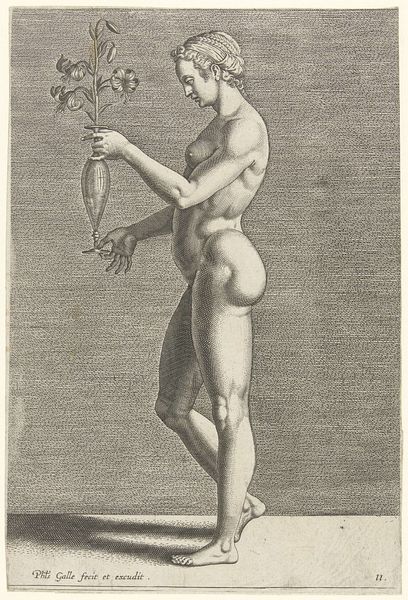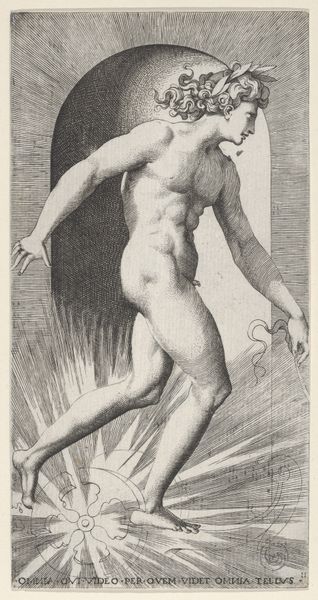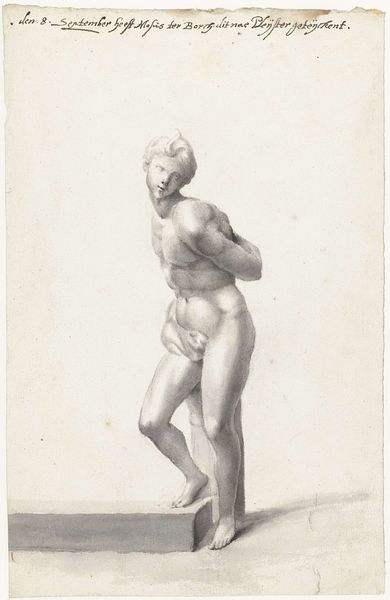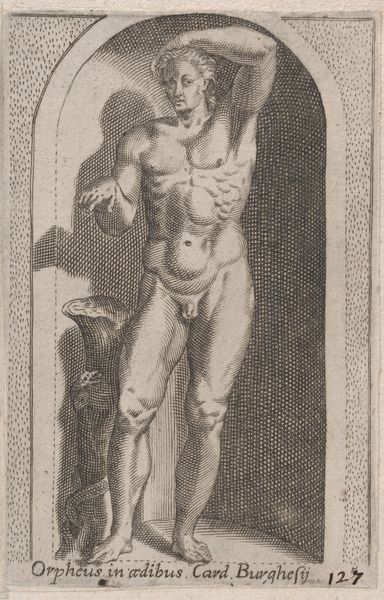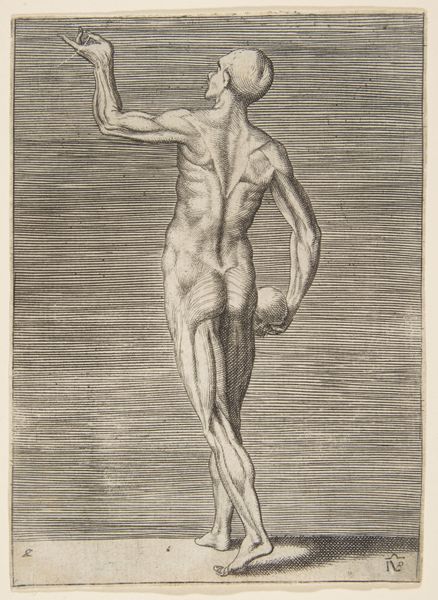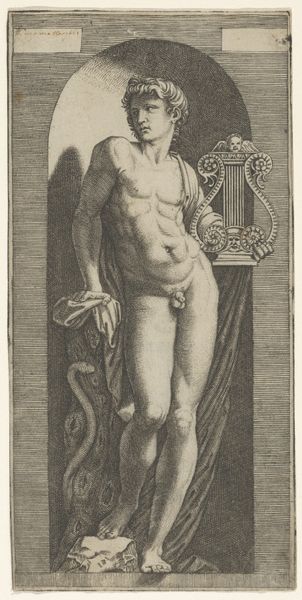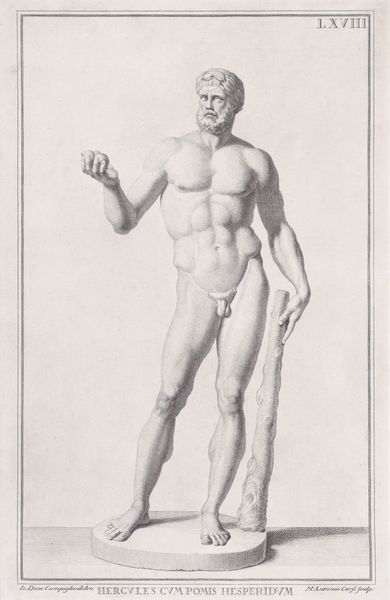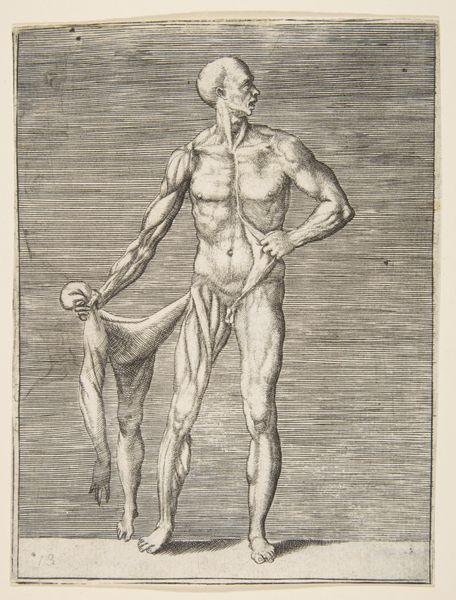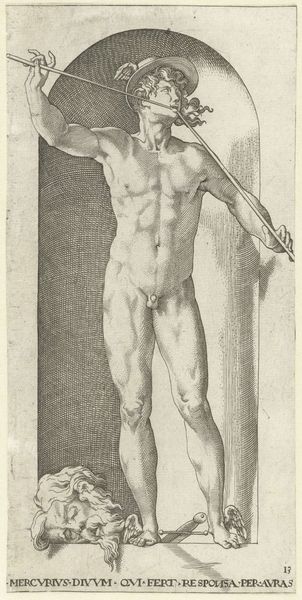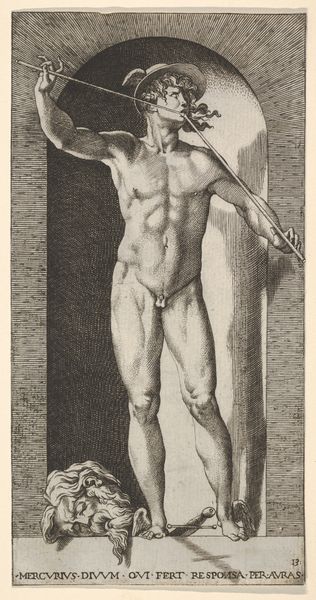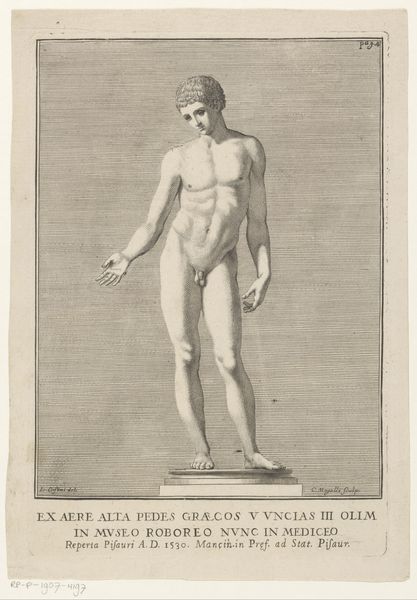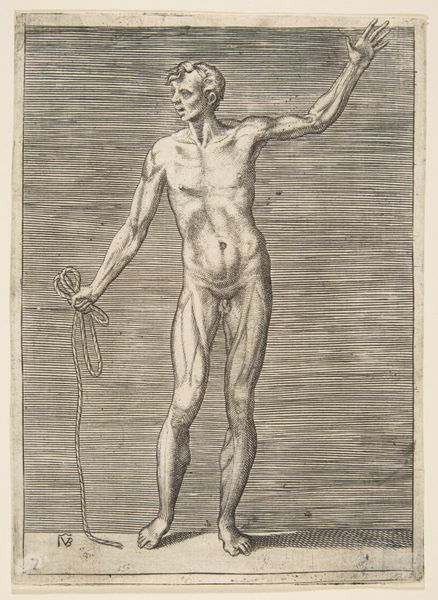
engraving
#
portrait
#
figuration
#
italian-renaissance
#
nude
#
engraving
Dimensions: height 238 mm, width 159 mm
Copyright: Rijks Museum: Open Domain
Editor: This engraving, "Naakte vrouw, van voren gezien." by Philips Galle, was made in 1589 and it's held at the Rijksmuseum. It’s strikingly…muscular, almost masculine, for a nude female figure of this period. What should we make of this representation? Curator: Consider the artistic climate. This was the late Renaissance. Italian Renaissance ideals of the idealized, classical body, heavily influenced Galle. It served the political and cultural elite by reaffirming their control through an emphasis on beauty and order. But representations of women during this period were complicated; beauty often was bound up with morality and reproduction. Does this figure adhere to those norms? Editor: Well, I can definitely see the nod to classical sculpture in the pose, but the figure definitely challenges those traditional beauty standards. I'm used to seeing smooth lines, soft features and more delicate figures in nudes, and here we have visible muscle definition and a certain…earthiness. How did the viewers interpret this? Curator: That's where things get interesting. Engravings like these had a public role in the art world. They circulated widely, allowing Galle to both disseminate his style and shape artistic taste. This nude, perhaps influenced by representations of powerful male figures, challenged or perhaps subverted notions of feminine beauty that reinforced traditional social structures. How might this kind of piece challenge, or reinforce, pre-existing ideas around social hierarchy or even gendered roles at the time it was produced? Editor: That's really intriguing, viewing this as more than just an image of a woman but a political and cultural statement! Curator: Exactly. Thinking about the social context can shift your perspective entirely. It is more than beauty. It’s also about power and politics. Editor: This has given me a new way to think about engravings, and about the public role of art, in general. Curator: Precisely! Examining these historical layers gives richer and greater understanding to the image and, ultimately, the purpose and intention of art.
Comments
No comments
Be the first to comment and join the conversation on the ultimate creative platform.

